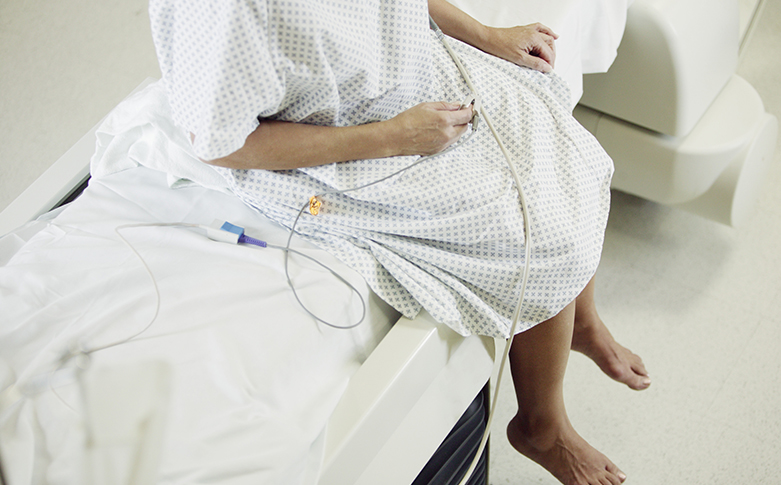Six years ago, I balanced a single spoonful of applesauce in my hand and decided to become a nurse. That spoonful of applesauce was for my father, who lay prone in a hospital bed after suffering from a hemorrhagic stroke. My family, clustered around Dad’s bed, verbally worried about the level of care he was getting now and what he might expect in the future. We learned quickly which nurses took excellent care of my father and which nurses to be wary of.
And then one day it occurred to me: the best care my father could get was from me. I could do a better job than some of my father’s nurses—could be more compassionate and respectful towards patients and family members, I could be much more of a calming and informative presence. I took initiative. I picked up the spoon and fed my father. That one simple act launched me on the long, determined journey to become a professional, compassionate, communicative, and spirited nurse.
Today, six years after I decided to become a nurse, I am excited to begin my nursing training at Drexel University. Watching the Cherokee-sponsored “A Nurse I Am” movie reminded me of my initial resolve following my father’s stroke. I related to and was most inspired by Bob Wilkinson and Ardis Bush, both of whom embody genuine concern, safety and excellence.
Patients and their families can discern genuine concern from their medical professionals. For Bob and Ardis, genuine patient concern comes as naturally as taking a blood pressure or pushing a medication—it is at the core of who they are as nurses. Genuine concern is the hand squeezes that Ardis frequently gives her patients and in the smiles she gives when talking to patients at the bedside. Ardis has the fantastic ability to sit, listen, and provide genuine empathy as is illustrated by her visit with a coworker undergoing treatment for cancer.
Bob exhibits this concern when sitting on the bed talking to a young patient about the food she is going to get at Steak and Shake when she goes home. His care is for more than her vital signs at the moment—it is for her mental state also. I am inspired to be like these two excellent role models.
I believe being an excellent nurse also requires a dedication to the safety and wellbeing of our patients. Bob demonstrates that asking questions is a key ingredient to patient safety when he checks the procedure for flushing medication with his team lead before he acts. Communication is also essential to patient safety and Ardis demonstrates this when she asks a patient if he understood what the doctor was saying regarding the initial cause of his pain. She patiently walks the patient through the disease process, seeking to increase his understanding and answer his questions.
In addition to their dedication to safety, both nurses embody nursing excellence in numerous ways. To me, excellence is being a nurse who can walk with the patient and family through an illness—either to health and healing, or to a peaceful passing. It is being the RN who comes along side and says to her patients: “I have seen this process before, I have walked others through this, come and let me help you walk through it.”
Bob echoes this sentiment when talking about comforting family members: “…they are looking for you to have some kind of comfort, some kind of word of empathy, because they’re going through a great deal of stress, they’re going through the unknown…” I understand Bob’s thoughts especially well because for the last 2 years I’ve worked as a certified nursing assistant alongside a wonderful team of dedicated staff members at a hospice house.
It has been my joy to observe and learn from the hospice nurses and a privilege to walk with patients and families during the last days of life. I have seen firsthand that Bob’s approach—coming alongside patients and their families and treating them as your own—works and provides an atmosphere where excellent nursing takes place every day.
Like Bob and Ardis, I will provide my patients with excellent care and a positive healthcare experience by drawing from my own life experiences. I can still remember the fear and frustration I felt when my father was attended to by nurses whom I could tell did not care. I seek to echo Bob’s sentiments when he stated, “I fight for quality of life every day. I fight for comfort, no pain, no nausea. I fight that my fellow nurses and myself treat each one with dignity as we would want to be treated if we walked in these halls with a sick child or a sick parent.” I will be this kind of RN.
This post by Erin Harvey was originally published as part of a series: What’s it really like to be a nurse? The inspiring film “A Nurse I Am” answers that question by featuring four compassionate, caring nurse role models who are deeply committed to their patients and profession.
Every year, Cherokee Uniforms holds a scholarship program based on the film. Entrants are asked to write an essay in response to “A Nurse I Am,” and the 10 winners each receive a $2000 scholarship to put toward their nursing education.Â
Read more inspiring essays by the winners of A Nurse I Am Scholarship Programs here.
Sponsored by Cherokee Uniforms
















